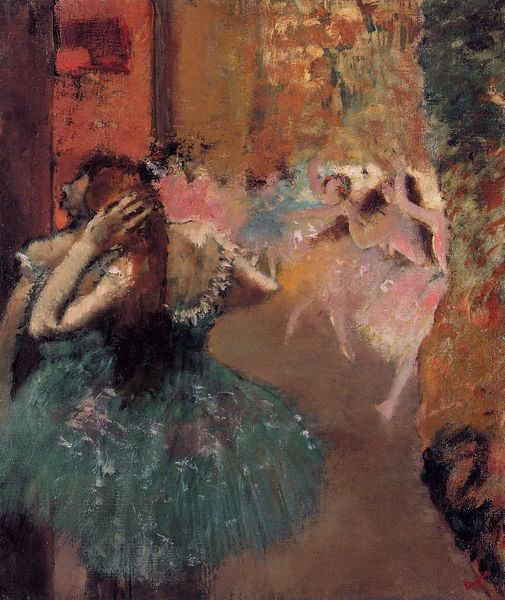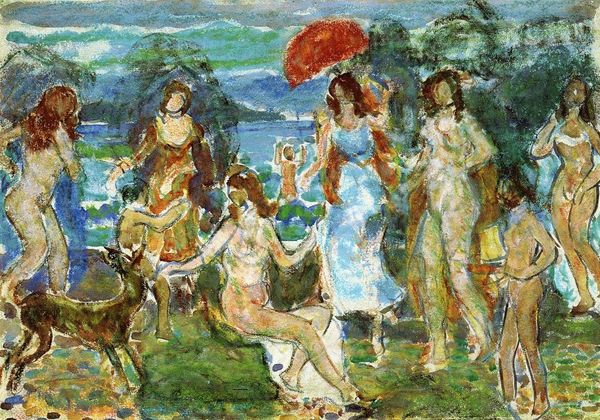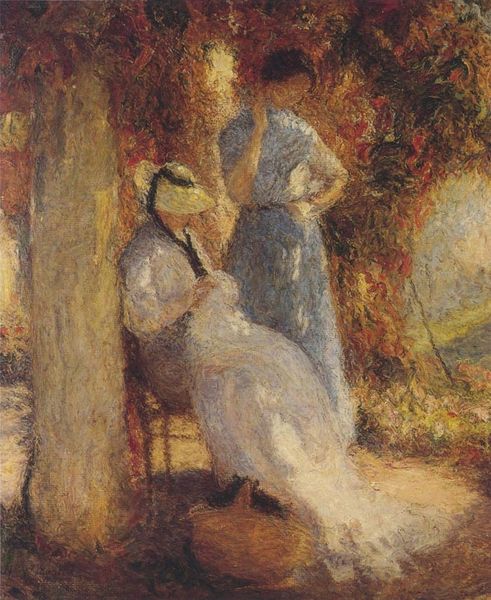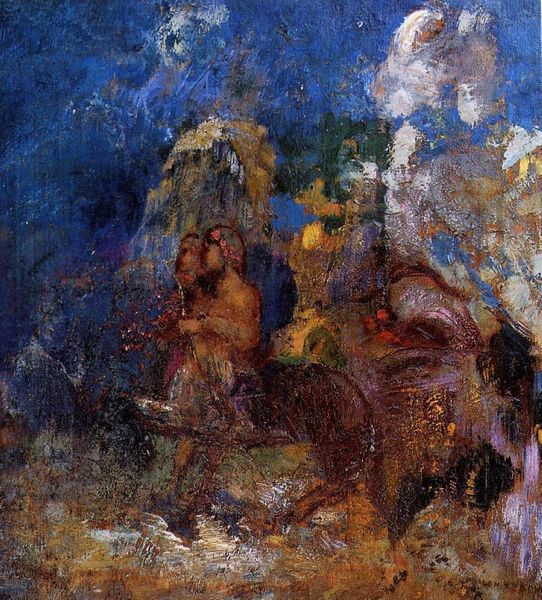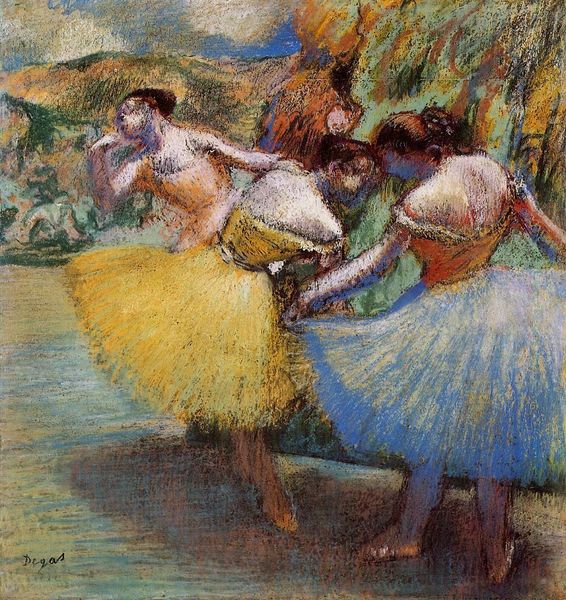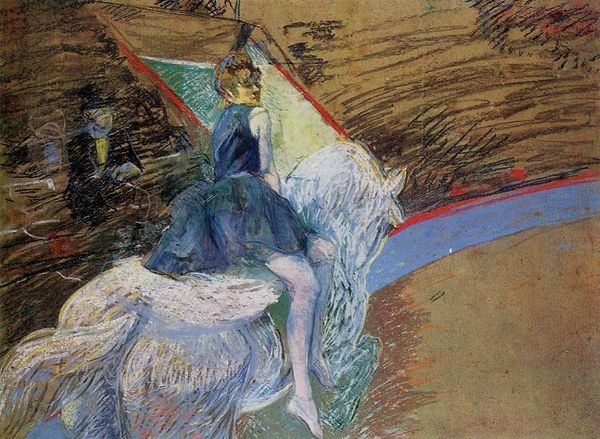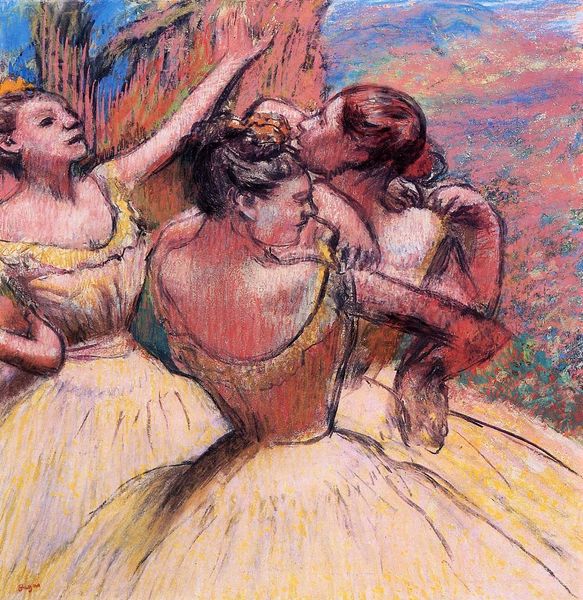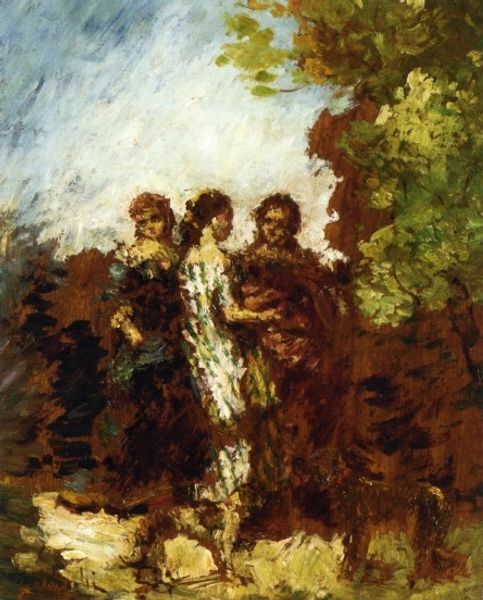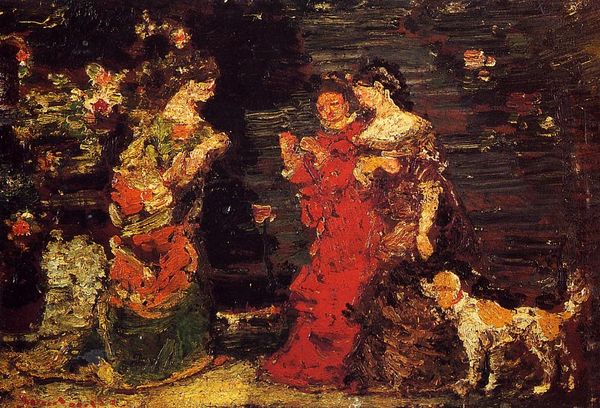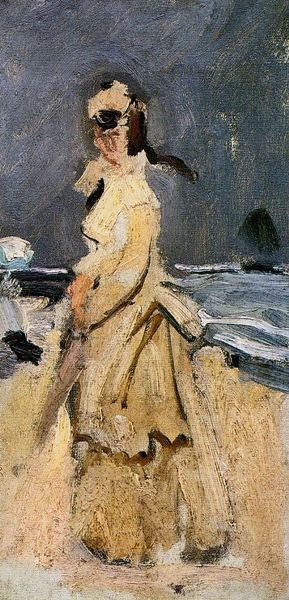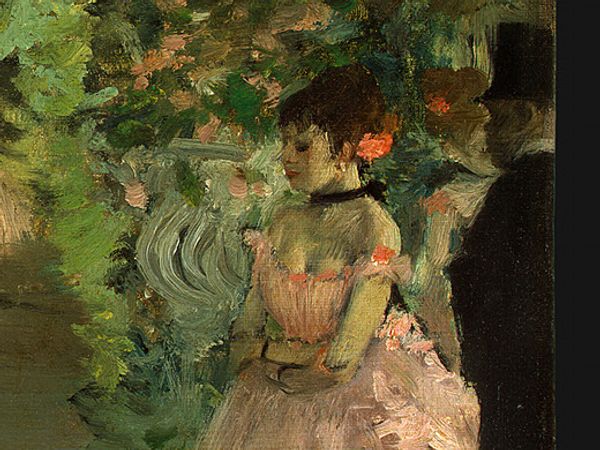
painting, oil-paint
#
portrait
#
painting
#
impressionism
#
oil-paint
#
landscape
#
impressionist landscape
#
figuration
#
oil painting
#
genre-painting
#
watercolor
Copyright: Public domain
Editor: Edgar Degas' "Dancer on Stage," created around 1890 with oil paint, has such a peculiar composition. It's not a stage but appears to be a cliff or rocks by the ocean. Also, what are those instruments doing there? What am I missing here? Curator: Degas consistently played with expectations. Think about the socio-political context. Ballet was becoming more accessible, and representations were also shifting. Degas challenges the expected glamor by introducing a somewhat unconventional landscape for the ballet dancer. Why do you think he juxtaposes this performance with those almost discarded instruments in the foreground? Editor: Hmmm, it’s interesting you point that out, I didn't really understand their presence, but it could be his commentary about class difference between art and musicians... almost like a precarity? What was Degas trying to say about art and performance itself at that moment? Curator: Exactly. The instruments appear almost like obstacles, obscuring the stage. Does that positioning shift your perception of the dancer? Consider Degas's audience; this piece reflects the complex and perhaps uneasy relationship society had with both art and its performers. The working class was very present but in a difficult position. The unconventional background might be a direct message regarding their natural settings in this kind of practice... it wasn't always a glamorous location. Editor: That definitely adds a whole new dimension. I see a societal commentary now rather than a purely aesthetic painting. It highlights a world not always visible within the performance itself. Curator: Right! The political role of imagery at its finest, it transforms how we appreciate the aesthetic achievement within a greater context of society's perceptions and socio-economic undertones. This makes us think deeper. Editor: Absolutely. Looking beyond the surface has certainly opened my eyes to how Degas was actively engaging with the cultural landscape of his time. Curator: I learned something too... thanks!
Comments
No comments
Be the first to comment and join the conversation on the ultimate creative platform.
